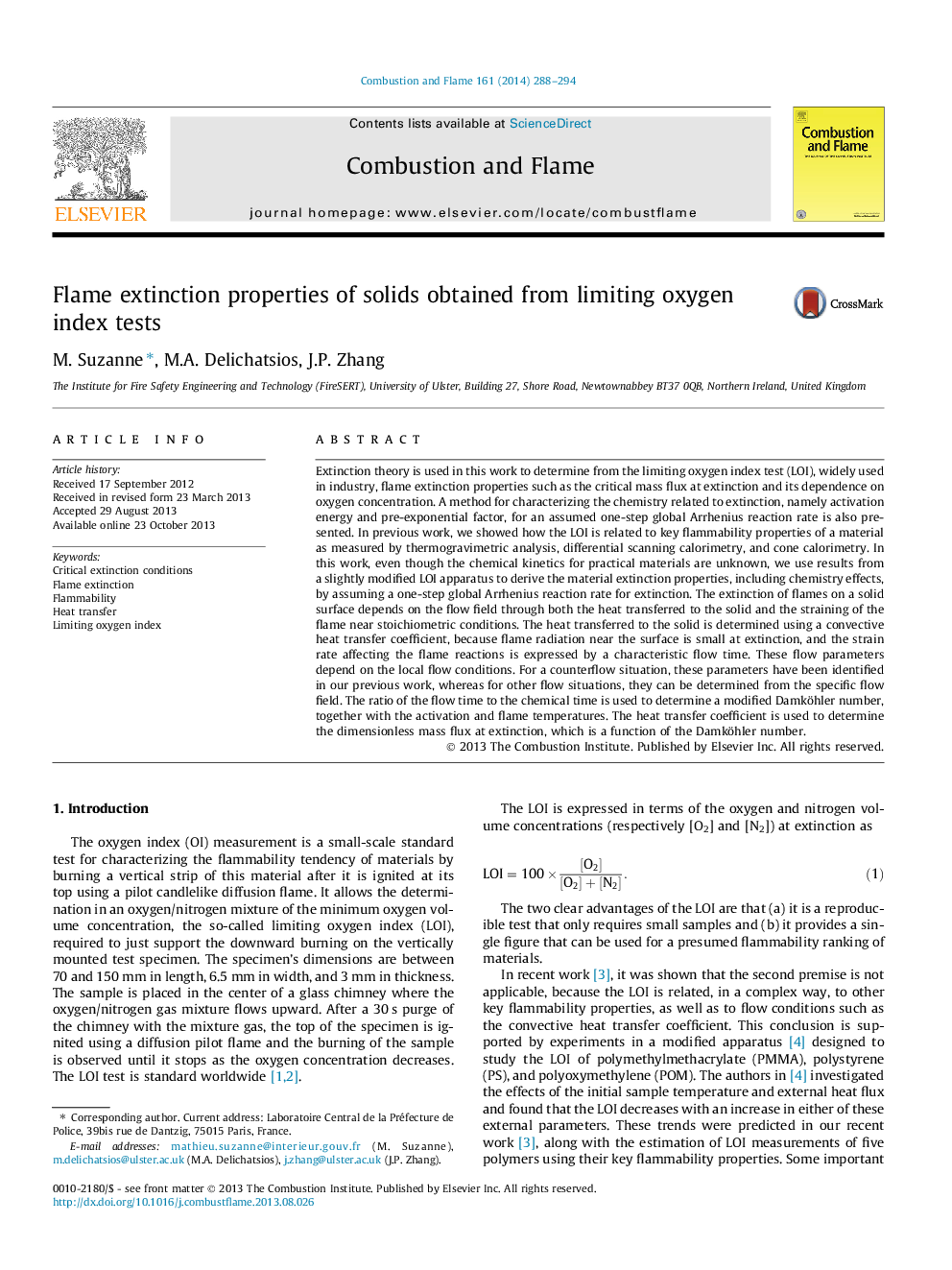| کد مقاله | کد نشریه | سال انتشار | مقاله انگلیسی | نسخه تمام متن |
|---|---|---|---|---|
| 168811 | 457954 | 2014 | 7 صفحه PDF | دانلود رایگان |
Extinction theory is used in this work to determine from the limiting oxygen index test (LOI), widely used in industry, flame extinction properties such as the critical mass flux at extinction and its dependence on oxygen concentration. A method for characterizing the chemistry related to extinction, namely activation energy and pre-exponential factor, for an assumed one-step global Arrhenius reaction rate is also presented. In previous work, we showed how the LOI is related to key flammability properties of a material as measured by thermogravimetric analysis, differential scanning calorimetry, and cone calorimetry. In this work, even though the chemical kinetics for practical materials are unknown, we use results from a slightly modified LOI apparatus to derive the material extinction properties, including chemistry effects, by assuming a one-step global Arrhenius reaction rate for extinction. The extinction of flames on a solid surface depends on the flow field through both the heat transferred to the solid and the straining of the flame near stoichiometric conditions. The heat transferred to the solid is determined using a convective heat transfer coefficient, because flame radiation near the surface is small at extinction, and the strain rate affecting the flame reactions is expressed by a characteristic flow time. These flow parameters depend on the local flow conditions. For a counterflow situation, these parameters have been identified in our previous work, whereas for other flow situations, they can be determined from the specific flow field. The ratio of the flow time to the chemical time is used to determine a modified Damköhler number, together with the activation and flame temperatures. The heat transfer coefficient is used to determine the dimensionless mass flux at extinction, which is a function of the Damköhler number.
Journal: Combustion and Flame - Volume 161, Issue 1, January 2014, Pages 288–294
